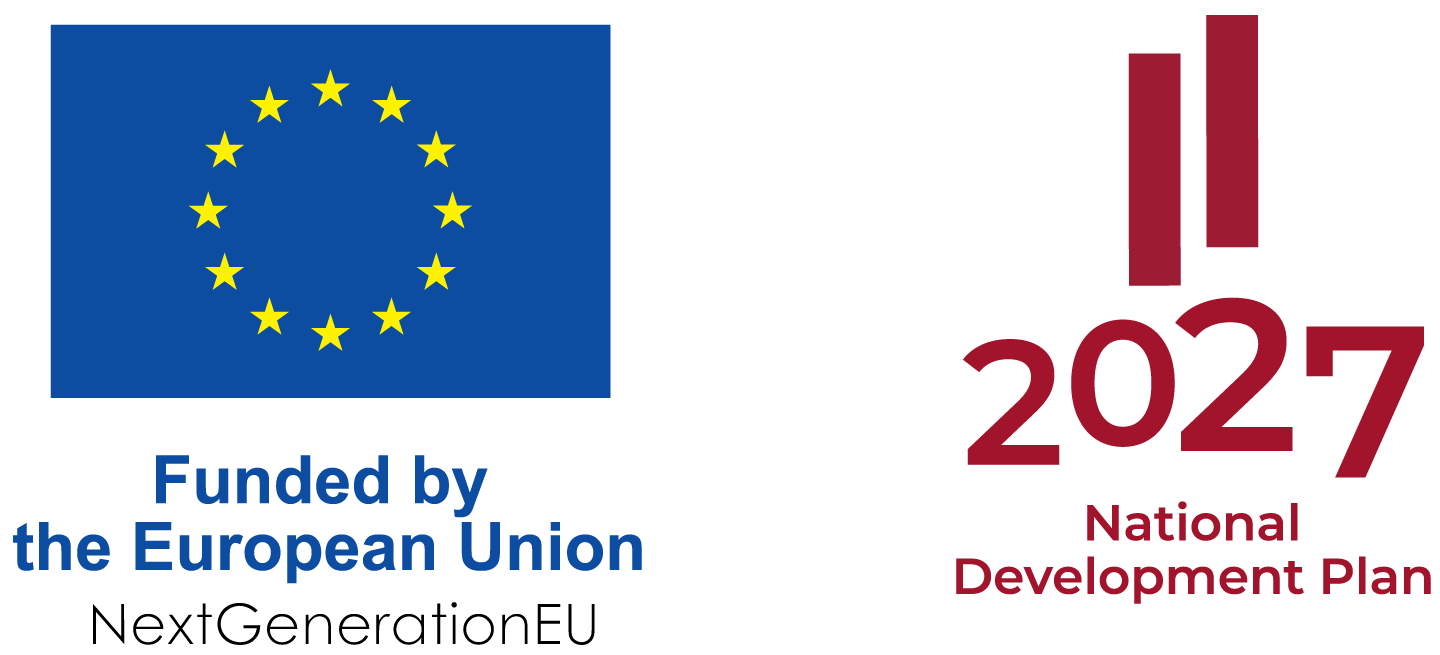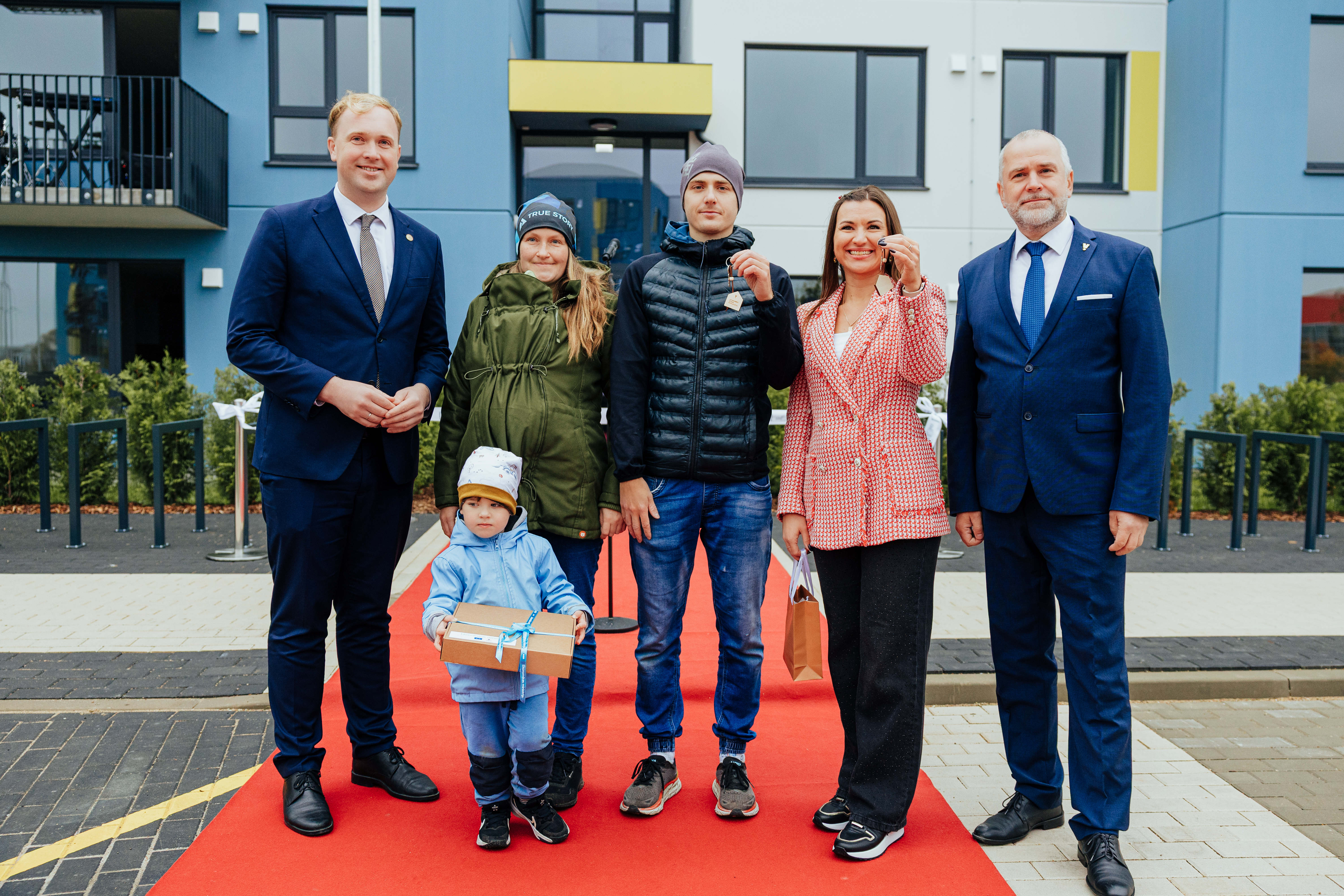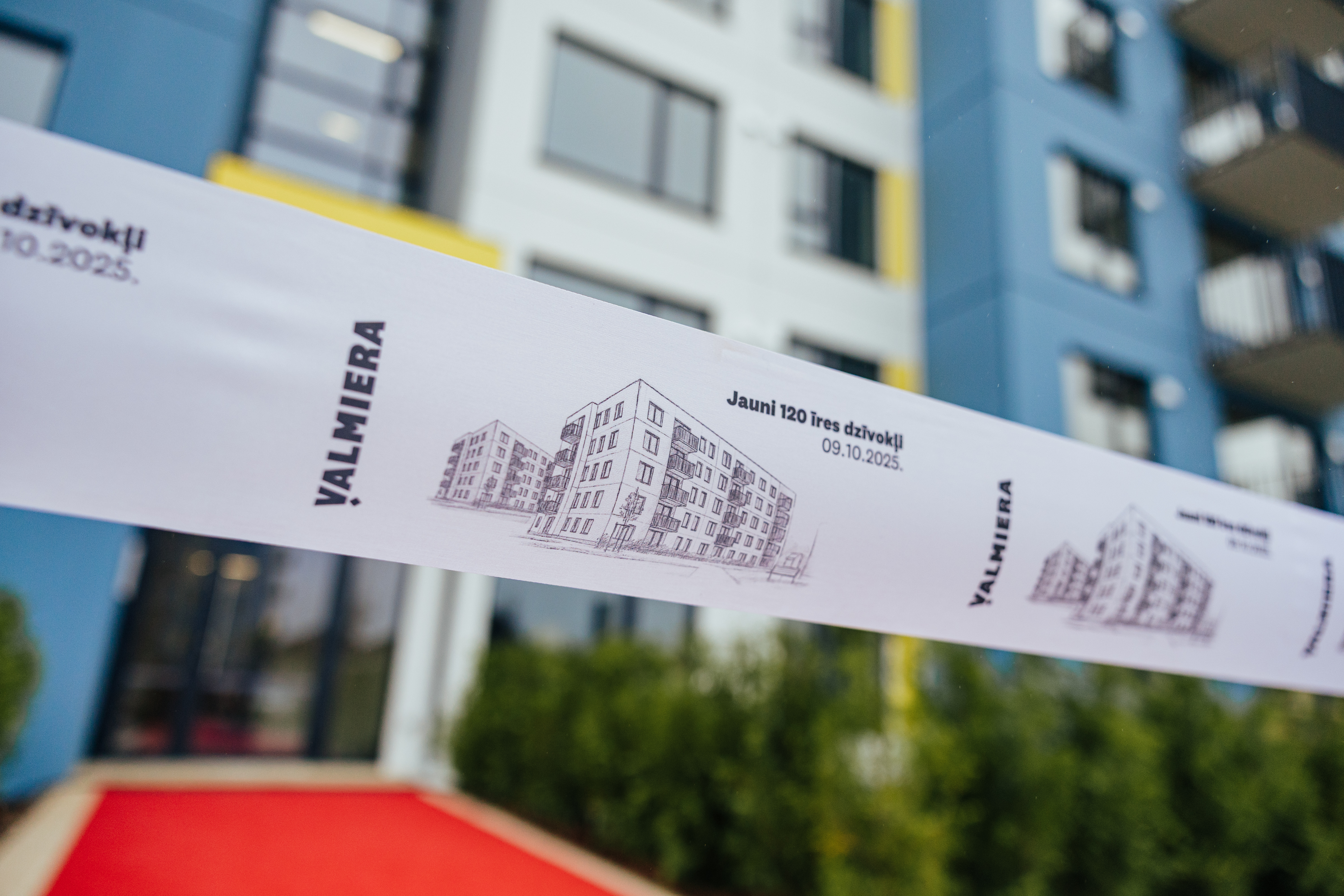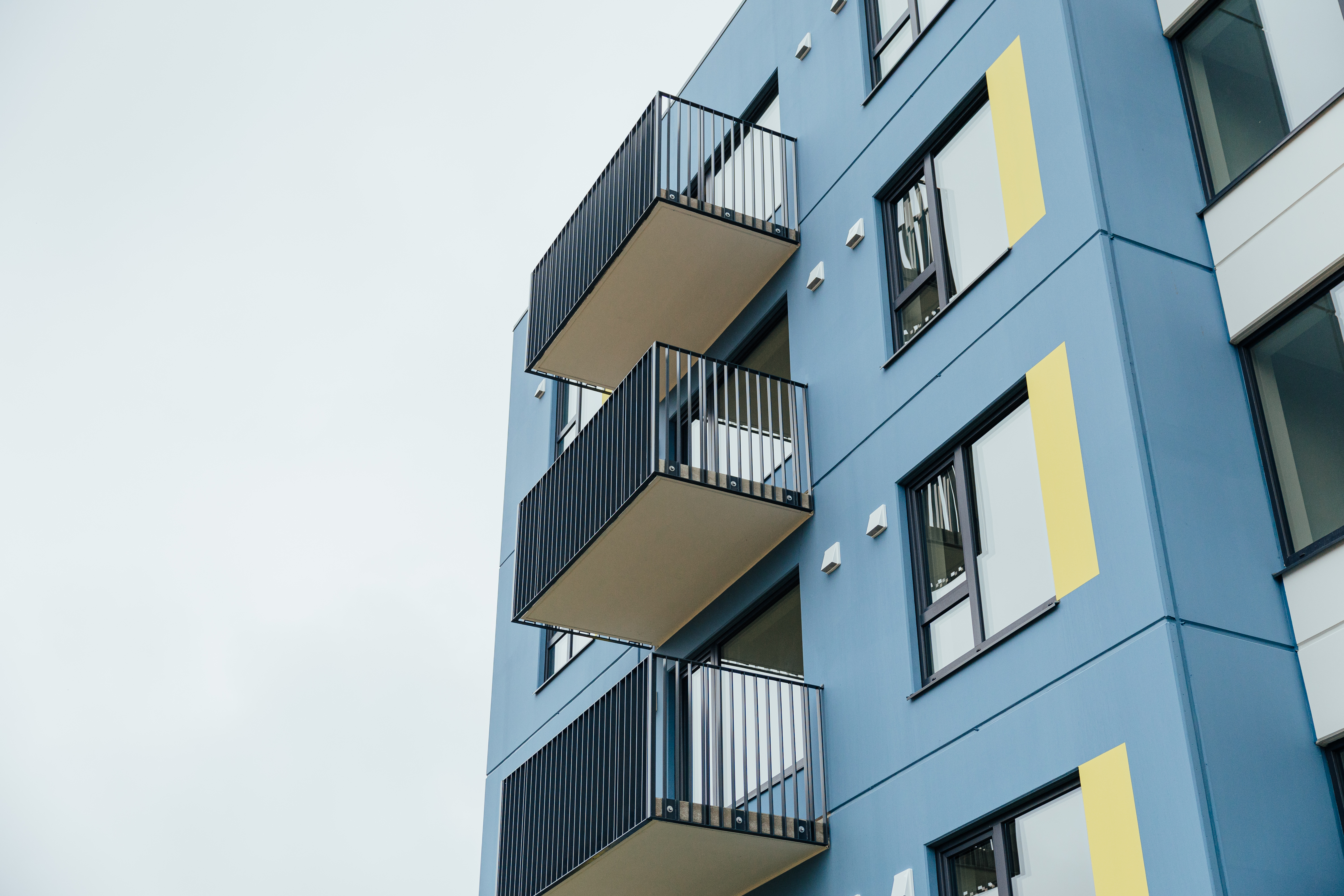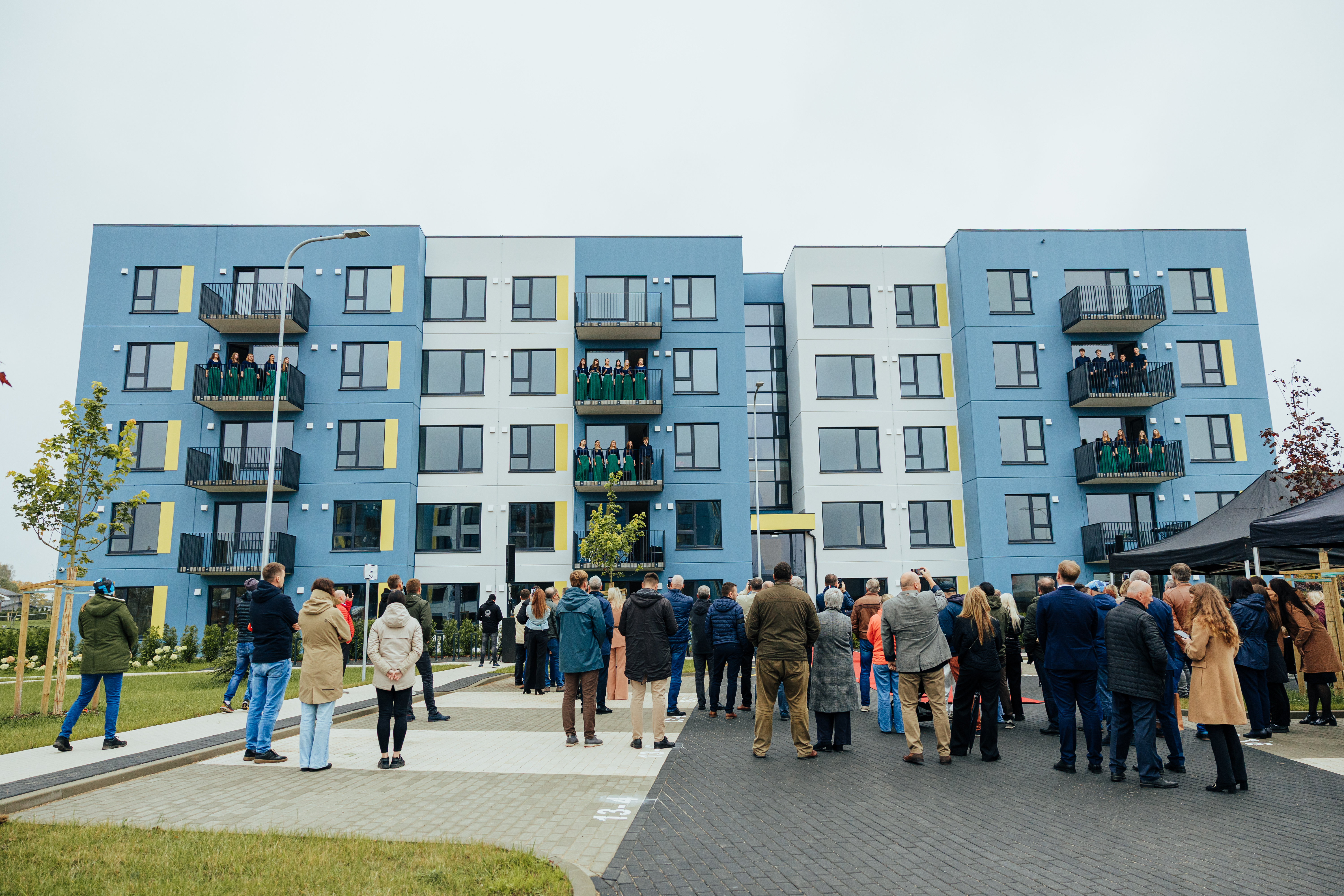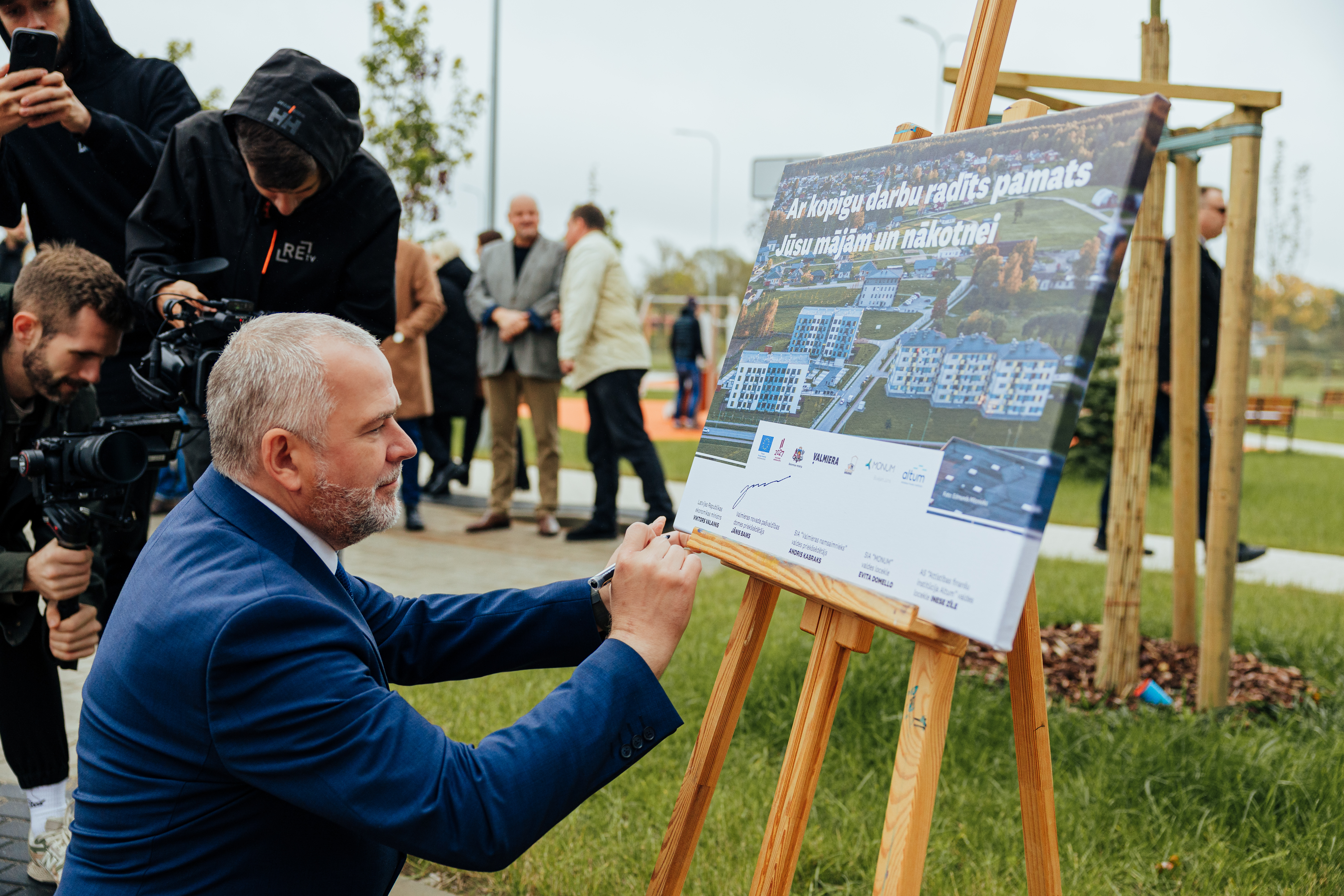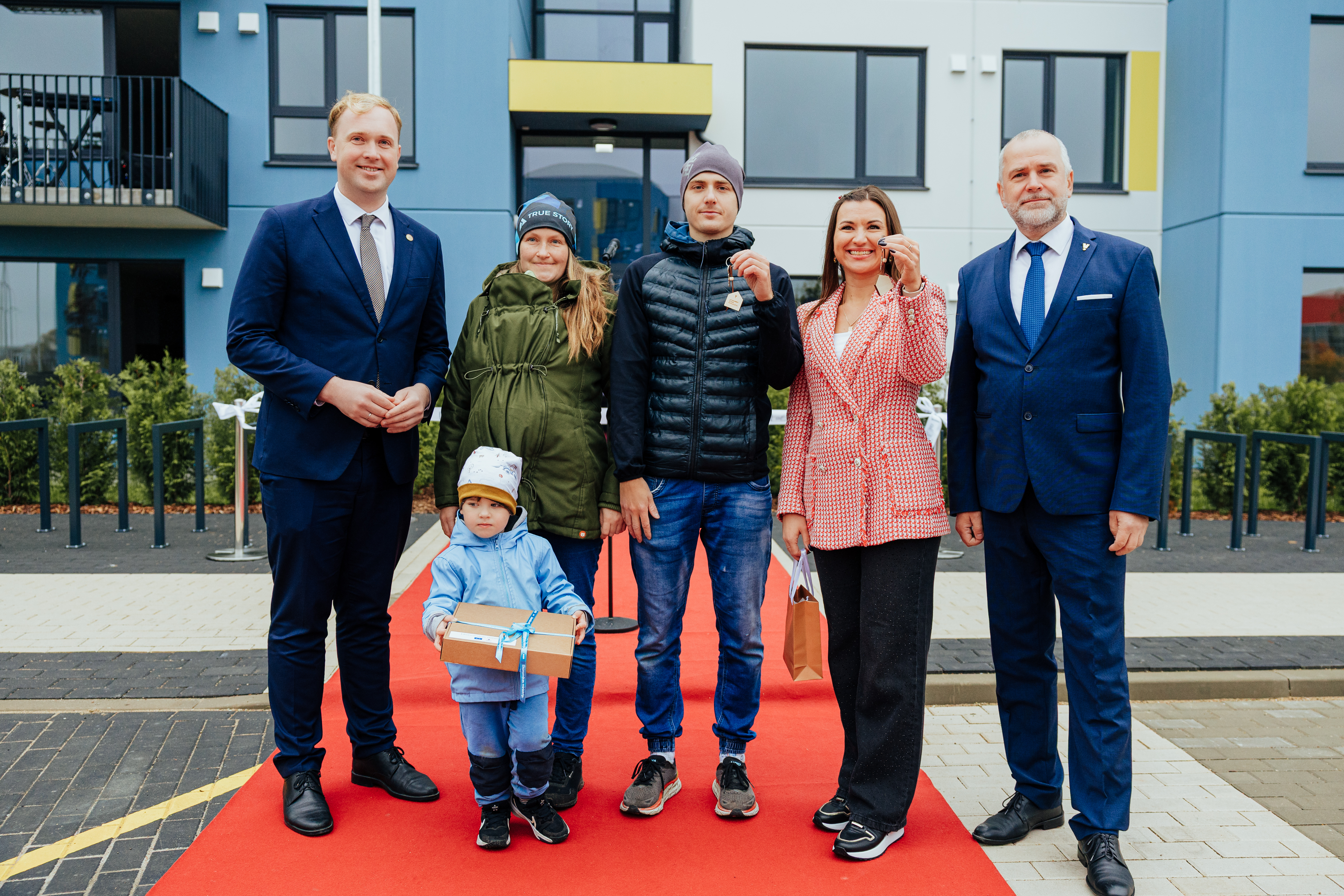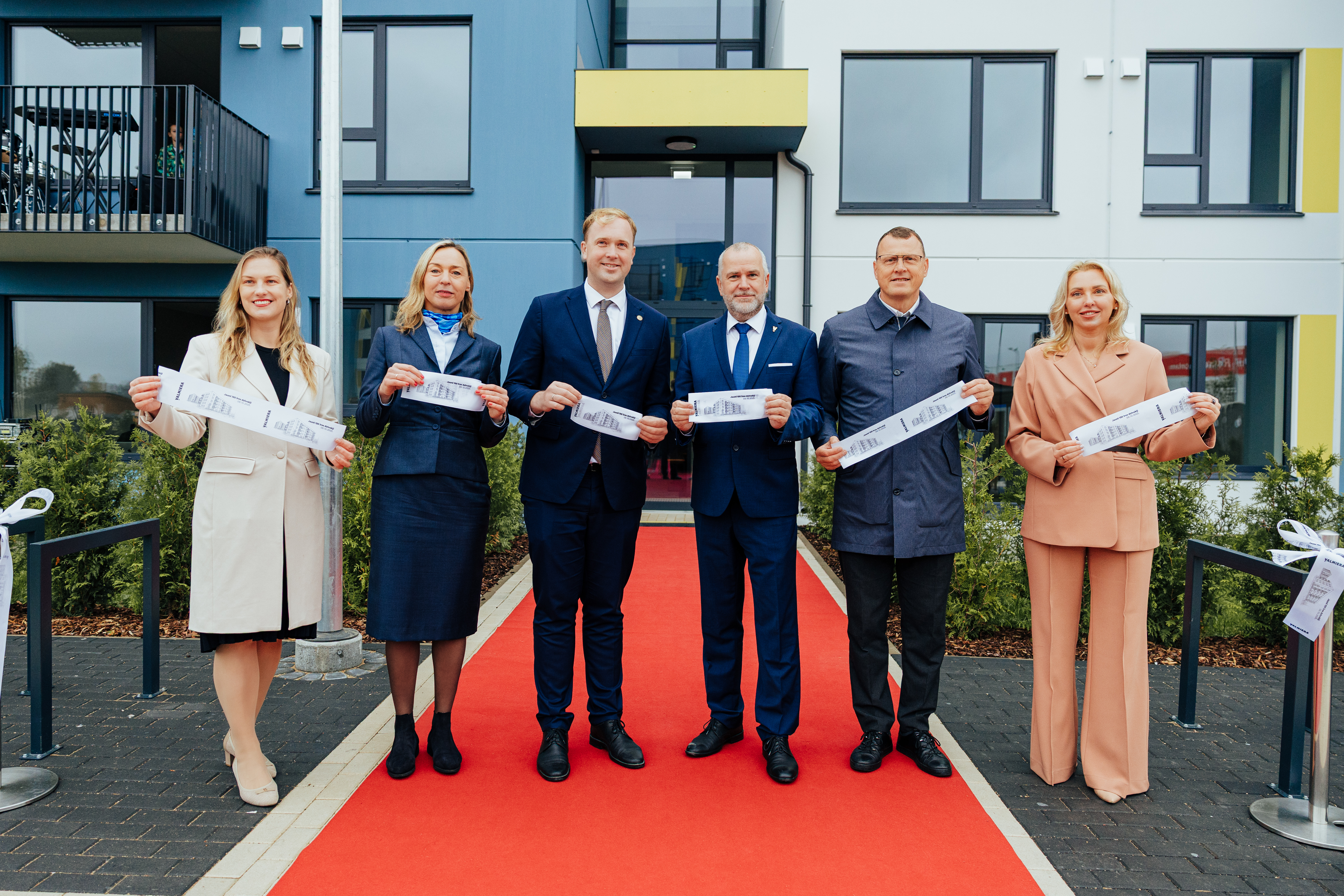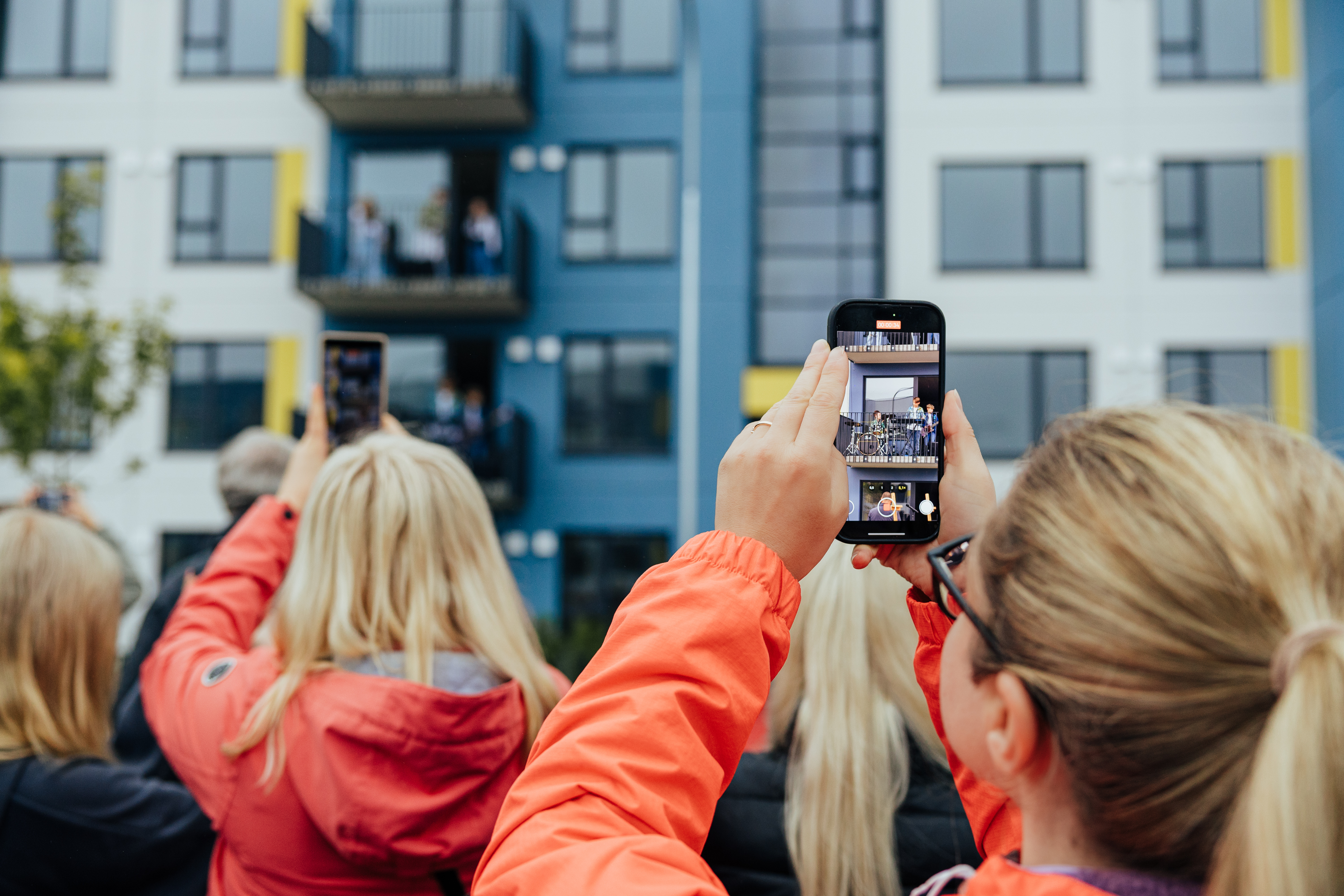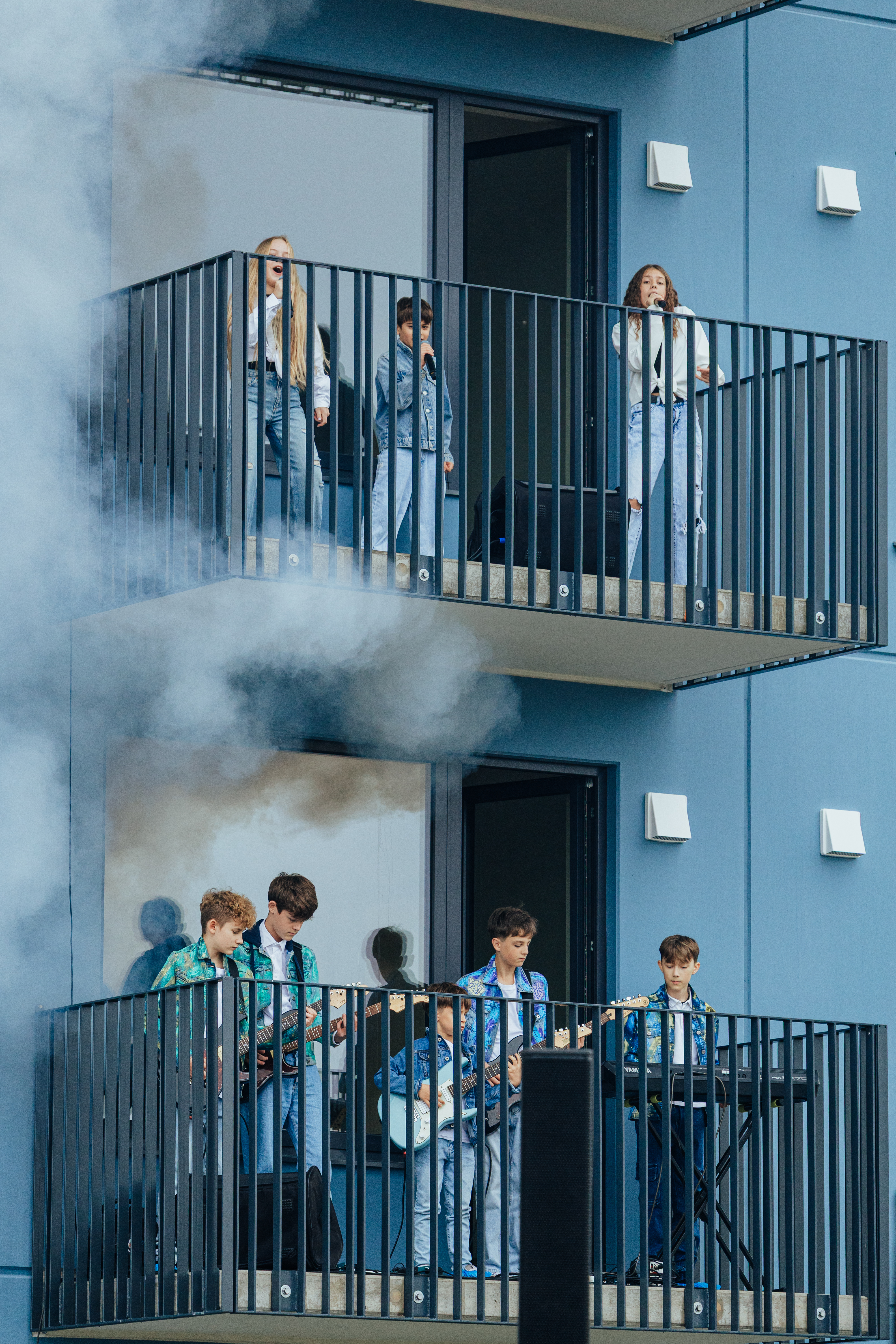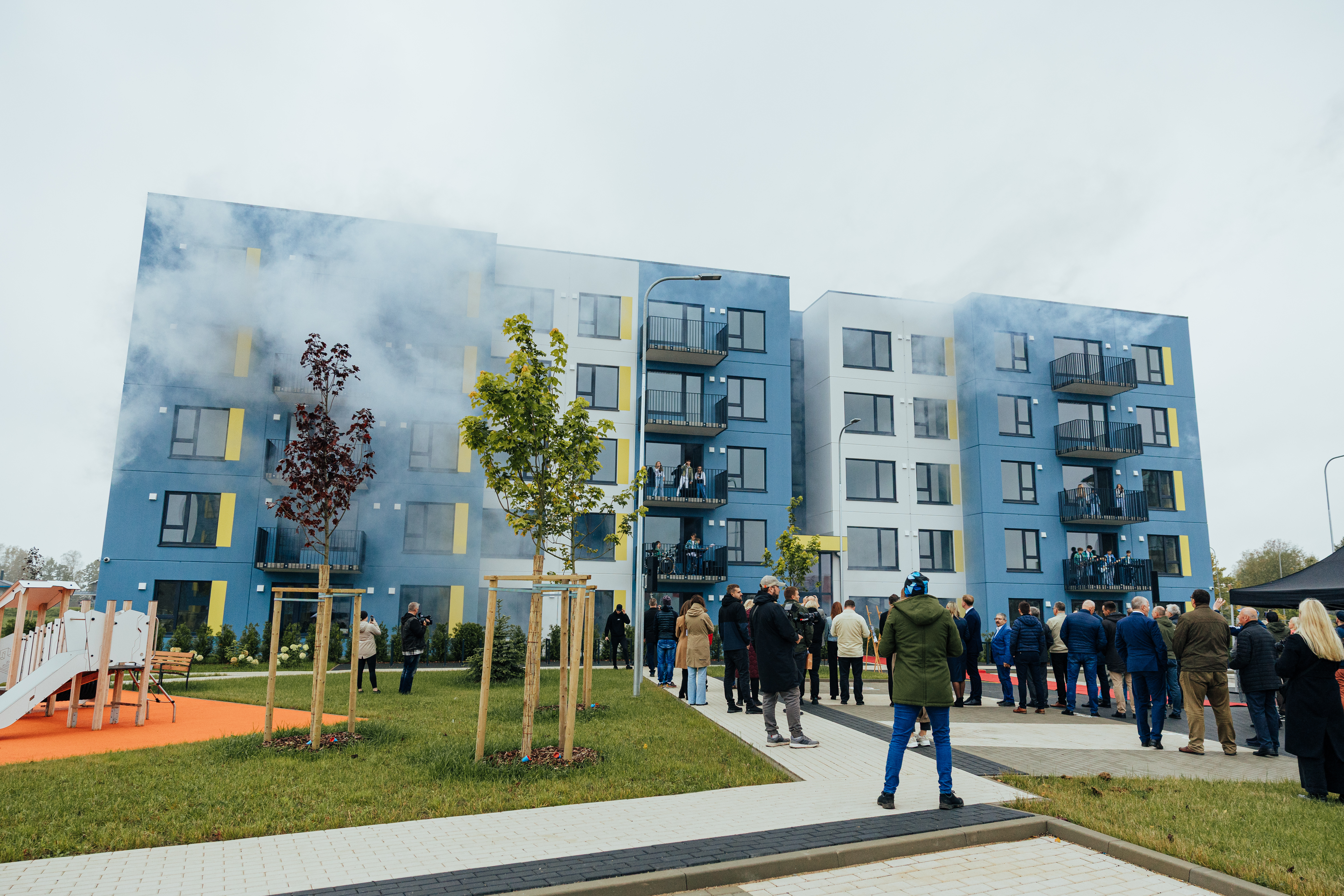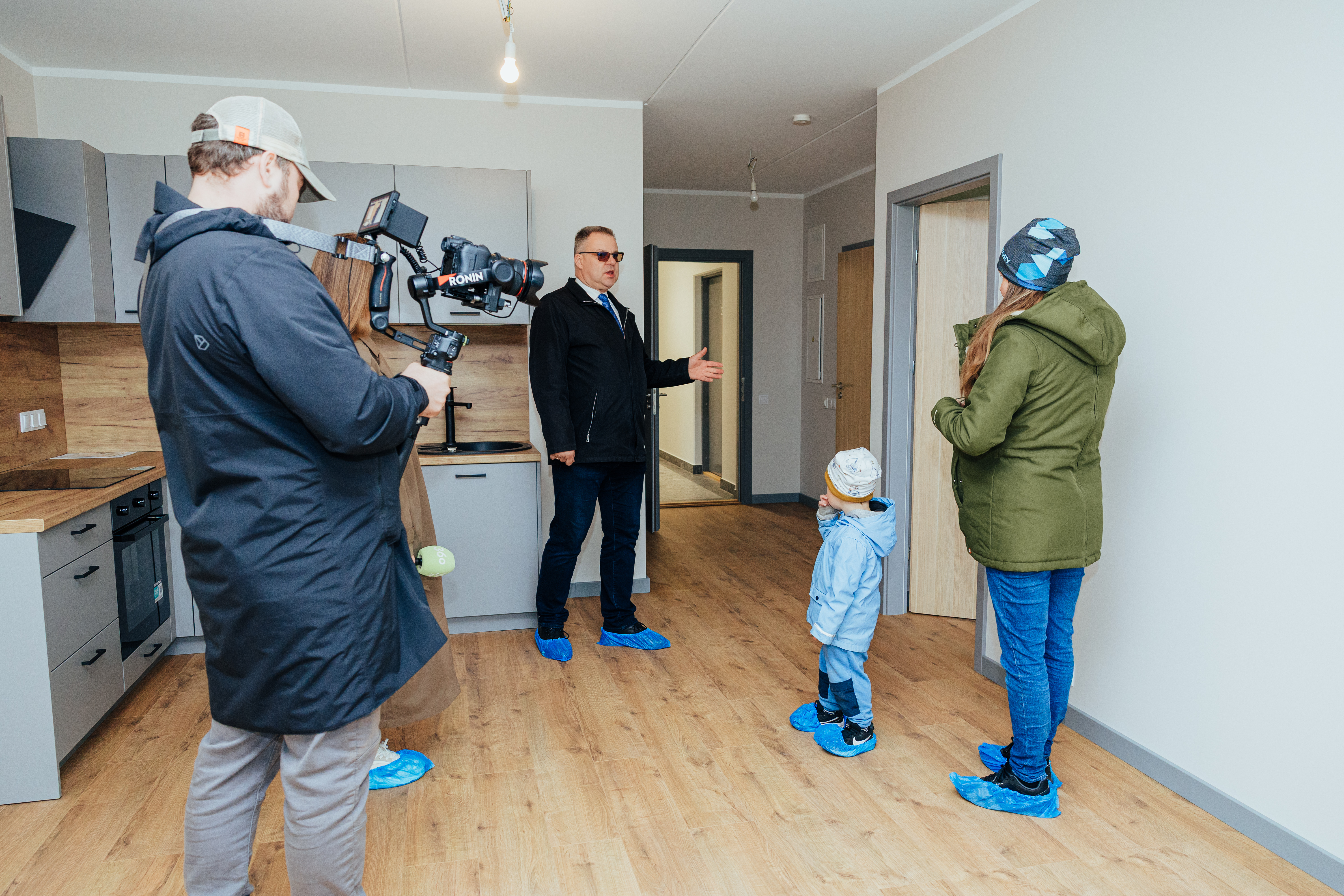The first state-subsidized low-rent apartment buildings have been completed in Valmiera – 120 new apartments to attract specialists. The project was implemented by Ltd. Valmieras Namsaimnieks, a company wholly owned by the Valmiera Government Municipality.
The opening ceremony emphasized the need for affordable, high-quality, and energy-efficient housing in the regions in order to increase competitiveness and promote business development. The state support program, implemented by Development Finance Institution ALTUM, has reduced housing construction costs so that residents have access to rental apartments that meet modern requirements at an affordable rent.
The new housing opportunities were recognised by 190 interested families, but 120 out of those households were granted the right to sign a lease agreement in accordance with the number of apartments available in both buildings (currently approved application statistics show that 304 people, including 116 children, will live in the new buildings). On the opening day, the Valmiera Government Municipality confirmed that the new apartments have been filled and the process of signing rental agreements is already underway.
The construction of these houses was carried out as part of a state support program – this is the first time such a program has been implemented in Latvia, following the example of other European countries, including the Netherlands, Germany, Austria, Poland, and others, where similar projects have been successfully implemented for more than 100 years. The aim of the program is to promote the availability of housing in regions for families who cannot afford to buy a home at market prices and for whom the private rental market is inactive.
The total cost of the project is €12.1 million, of which ALTUM’s loan under the European Union Recovery and Resilience Facility Plan 3.1. Reform and Investment Direction “Regional Policy” 3.1.1.4. i. investments ” Establishment of a financing fund for the construction of low-rent housing” for both buildings is EUR 11.61 million, of which up to 30% of the eligible costs of the project can be recovered as state aid after the implementation of the project.
Photo: Uģis Brālēns
